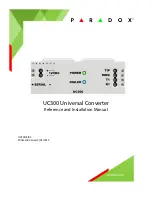
36
15.2.1 Function mapping for effects at outputs A and B
The function mapping for the effects at function outputs A and B
is carried out in CV61. If no mapping has been specified, the
effect set in CV60 is always active. If mapping has been
specified, the effect is switched on and off with the selected
function.
Each bit of CV61 stands for a function of the digital system: Bit 1
for function 1, Bit 2 for function 2 and so on up to Bit 8 for
function 8.
Bit:
1
2
3
4
5
6
7
8
CV61
F1
F2
F3
F4
F5
F6
F7
F8
If you want to map a function to the effect set in CV60, you will
have to set the corresponding bit.
Bit:
1
2
3
4
5
6
7
8
CV61
F1
F2
F3
F4
F5
F6
F7
F8
0
0
0
1
0
0
0
0
In the above example, the effect set in CV60 is switched on and
off with F4.
Here, you can also set several bits and thus use several
functions to switch the effect on and off.
15.3
Effects at outputs C and D
The settings for the effects at function outputs C and D are
carried out in CV62. The following rule applies:
•
The units digit determines the effect for output C
•
The tens digit determines the effect for output D
The set effect always works for the function output, unless you
have mapped functions in CV64.















































